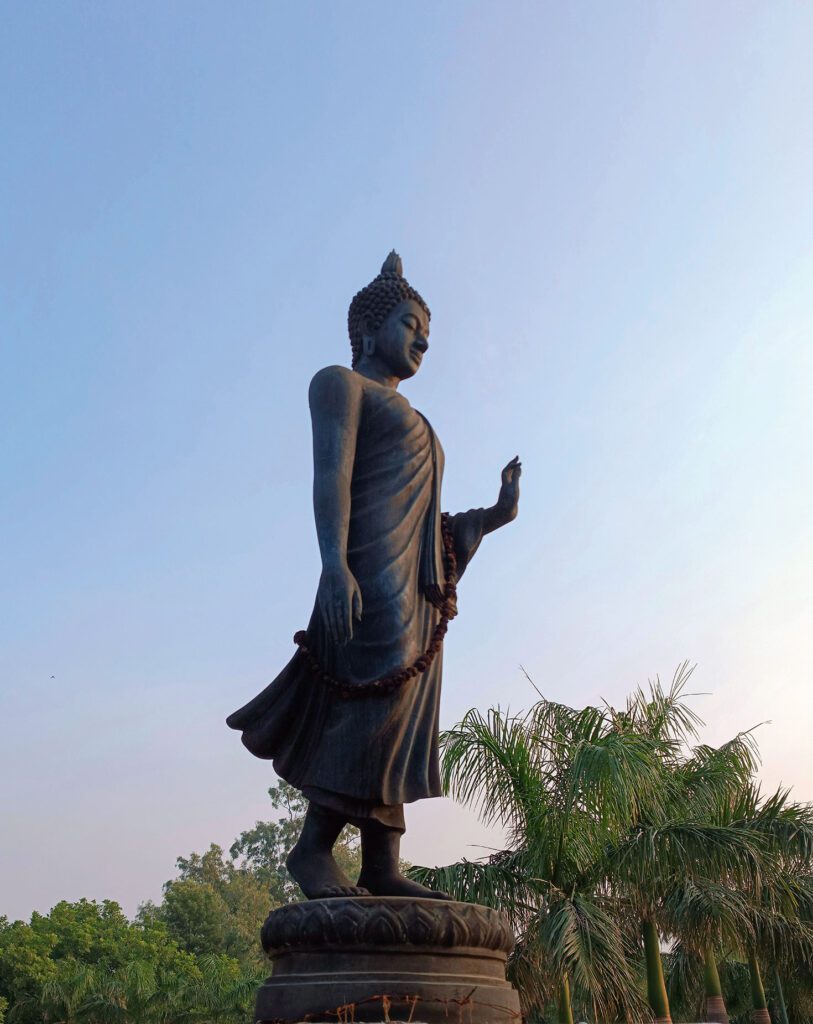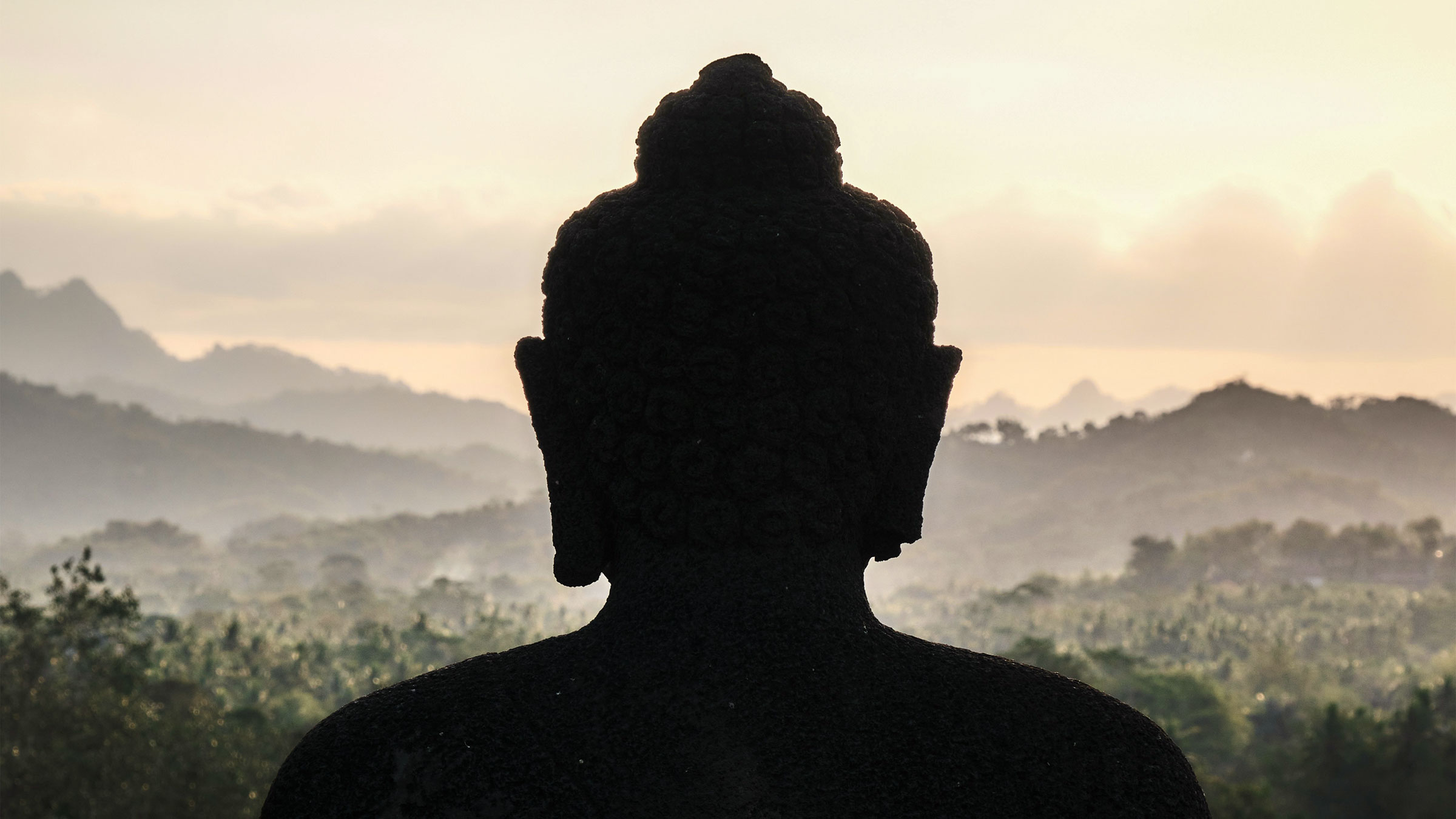Mindfulness has begun to permeate Western culture, and, as expected in a capitalist society, it has become trivialized and commodified. You can now find hordes of “mindfulness products,” ranging from mindfulness coloring books to an “in-depth planner that will help you to stay organized, increase your productivity levels, and generally make your life live up to the legendary person you truly are!”
I can see the Buddha raising his eyebrows.
Here’s my favorite definition of what mindfulness actually is: “Mindfulness is deliberately paying full attention to what is happening around you and within you—in your body, heart, and mind. Mindfulness is awareness without criticism or judgment.”
In his teachings on the four foundations of mindfulness, the Buddha provided instructions for how to direct attention to body, heart, and mind. These four foundations are mindfulness of the body, mindfulness of feeling tone, mindfulness of mind, and mindfulness of mental objects.
Mindfulness of the Body
When you bring the mind’s awareness to bodily sensations, you realize that a lot is going on, including touches, temperatures, and movements (which are a series of touches that the mind links together and calls “movement”). You might experience a tingling sensation arising from the billions of cells in your body. If you stay with those sensations, you realize that day and night, whether you’re paying attention to them or not, the cells in your kidneys are filtering our excess minerals; the cells in your pancreas are constantly monitoring and adjusting your blood sugar; the cells in your spleen are pulling red blood cells that are damaged or old out of circulation and retrieving and recycling their iron; and specialized cells in your immune system are detecting and destroying invading organisms before they can make you sick or turn into cancer cells.
“Mindfulness is essential to a spiritual life.”
Within your body, there are billions of cells that are bacteria, viruses, and fungi. In fact, you are made up of more “other” bodies than “your cells,” and they create a universe of supporters, helping to digest your food and secreting hormones. You’re always being cared for and never alone. A spontaneous feeling of gratitude arises when mindful attention helps you experience this.
Consider beginning each morning with mindfulness of the body. During the night the mind is off in dream worlds and is barely aware of your resting body. In the morning, you may stumble around a bit. Can you bring body and mind back together? One way to do this is with body scans, moving awareness gradually through each part of the body. When the first foundation is firm, it’s easy to build upon it.
Mindfulness of Feeling Tone
After we’ve settled our attention in the body, we turn it to the current feeling or feeling tone. This is not to be confused with emotions. What we’re talking about here is how at the most basic level, we immediately experience everything as either pleasant, unpleasant, or neutral.
One of the miracles of mindfulness is that it gives us some agency over how we respond to feeling tones. The late Zen teacher Thich Nhat Hanh suggested turning the corners of the mouth up into a gentle smile. I find that this brightens my entire being.
Mindfulness of Mind
Mindfulness of mind means mindfulness of thoughts and emotions. From the Buddhist point of view, emotions are an epiphenomenon, composed of body sensations plus feeling tones plus thoughts. For example, you might wake up in the morning feeling sore. If the feeling tone is negative, right away the mind comes in with its worries about your survival. You might think, “I’m sore all over. Something’s wrong. Am I getting sick? Maybe this is the beginning of a fatal illness. What should I wear in my coffin?” And tears arise as you picture your loved ones grieving at the funeral. Or, the mind could say, “I’m sore all over. That was a great workout I had at the gym yesterday. I’m getting stronger day by day.” And you smile with happiness as you picture yourself with a toned body and many admirers at the beach.
Some folks object to using a small smile to change a negative thought or emotion. But the Buddha promised that we could learn to end our own suffering. He recommended recognizing even subtle harmful (afflictive) thoughts and emotions and substituting beneficial ones: loving-kindness for ill will, compassion for pity, sympathetic joy for jealousy, and equanimity for clinging or aversion. He came upon this practice as he worked with his own thoughts and emotions.
I’ve found that if I’m in a big crowd of strangers—for example, in the airport—without noticing it, my mind turns to slight but recognizable aversion. If I notice and switch to doing loving-kindness practice for everyone I pass, saying to myself, “May you be happy and well. May your trip be successful,” my own inner state becomes positive.

Mindfulness of Mental Objects
Our minds have two functions: thinking and awareness. Most of our waking hours are spent in the thinking and emoting mode. Practice—often years of practice—makes it possible to switch at will from thinking to pure awareness and back. Why is this important? Awareness removes us from the narrow, self-centered view of our lives and the lives of others. It gives us perspective.
When the mind is open in pure awareness, we can watch the mind objects—the totality of our experience. We see that body sensations, thoughts, and emotions appear, exist for a while, and then fade away. Advanced practice enables us to rest in awareness even when thinking becomes necessary and to let go of thinking when it is not necessary. This prevents us from reacting out of anger, jealousy, or hidden prejudice. This saves us and other living beings from suffering.
We all know the difference between thinking about something and experiencing it. If you’d never eaten chocolate, you could have someone try to explain it to you. But in the end, they’d probably say something like, “It’s sweet, but not too sweet, and melty, and…actually I can’t describe it.” Words about chocolate are not the same as the experience of tasting chocolate with your own mouth. Words about mindfulness are not the same as the effortless immersion in the flow of reality when the mind is truly quiet.
If we spend a lot of time with our body doing one thing while our mind is on vacation somewhere else, we aren’t present for much of our lives. When we aren’t present, it makes us feel vaguely but persistently dissatisfied. This sense of dissatisfaction, or a gap between us and everything else, is the essential problem of human life. It leads to those moments when we’re pierced with a feeling of deep doubt and loneliness.
What we call peak moments are times when we are completely aware. At these times the gap between us and everything else closes and suffering disappears. We feel satisfied. Actually, we’re beyond satisfaction and dissatisfaction. We are present. The smothering sense of self evaporates. We are presence. We get a tantalizing taste of what Buddhists call an enlightened life.
These moments inevitably fade, and there we are, separate and grumpy about it. We can’t force peak moments or enlightenment experiences to happen, or to last. Mindfulness, however, can help close the gaps that cause our unhappiness. Mindfulness unifies our body, heart, and mind, bringing them together in focused awareness—full attention. When we are thus unified, the barrier between “me” and “everything else” becomes thinner and thinner until, in a moment, it vanishes! For a while, often a brief moment, or occasionally a lifetime, all is whole, all is holy and at peace.
People often think that they don’t have time to practice mindfulness. This isn’t true. There are infinite opportunities to bring the clarity of mindfulness into our daily activities—for example, when waiting. Waiting is a gift of time free to practice. If you’re waiting in line, notice all the voices and little sounds around you, the feeling of your feet on the floor and of whatever your hands are touching.
Another opportunity to practice mindfulness is while walking. Sometimes when I’m walking around the monastery, I notice that my mind is becoming crabby. If I open my mind wider, becoming aware of the movements of my feet, the continual support of the great earth underneath, the dancing play of light and shadows on a sidewalk, and then I open wider to the plants around me and the sky above, the crankiness dissolves.
Catch your mind when it takes an excursion into the past or future, and bring it firmly back into the present. Because our body is always in the present moment, we stop thinking when we anchor our mind in our body. You can pick where to anchor your awareness, such as in the flow of your breath or in what your hands are experiencing right now. When you’re showering, anchor in the sensation of the water hitting your skin. When you’re gardening, anchor in the feeling of your hands touching dirt, stems, leaves, roots. When you’re driving, you can come back to the constantly changing vibrations of the tires as they ride along the road. Are you safer driving a car while thinking about problems at home, at work, or in the world, or are you safer if your mind is clear and your awareness wide?
Mindfulness is helpful to the extent that it spreads out into all the activities of our lives. Mindfulness is essential to a spiritual life. It becomes a kind of continuous prayer, an appreciation of each moment of the particular life we have been given.

